Key Takeaways
Water safety for toddlers offers:
- Life Jackets: Always use U.S. Coast Guard-approved life jackets to provide essential safety for toddlers near water.
- Dedicated Supervision: Ensure constant adult supervision to prevent accidents and be within arm’s reach of your child.
- Swim Lessons: Enroll toddlers in swim lessons to build confidence and teach essential water safety skills.
- Safe Environment: Create a secure water environment, especially when traveling, by inspecting areas and using portable safety gear.
Check out our baby gear rentals.
As a mother, I’ve learned one of life’s hardest lessons firsthand. Drowning is quick; it’s quiet, and you never think it will happen to you until it does. My son, Yori, was three years old when he drowned. Even though there were adults in and around the pool, a momentary lapse in supervision led to my worst nightmare. This experience has led me to start No More Under, which helps kids get swim lessons and educate other parents on how to keep their toddlers safe around water.
In sharing what I’ve learned, I hope to provide practical water safety tips for toddlers and children so they can enjoy the water safely. Here are some essential steps to protect your little ones while they splash and play on vacation and at home!
1. Always Use Life Jackets

Photo: treelinereview.com
Life jackets are a must-have whenever your toddler is in or near water, whether at the pool, beach, lake or especially on a boat. Here’s what you need to know:
- Choose the Right Size: Ensure the life jacket fits your child correctly. It should be snug but not too tight, and the straps should be adjusted to secure the jacket firmly.
- Look for Certification: Make sure the life jacket is U.S. Coast Guard-approved.
- Avoid Inflatable Floaties: While it might be tempting to pack inflatable water wings on vacation, they should not be used for safety measures. In particular, water wings can slip off arms and often provide a false sense of security.
Life jackets provide a crucial layer of safety and save lives for children and adults!
2. Be a Dedicated Water Watcher
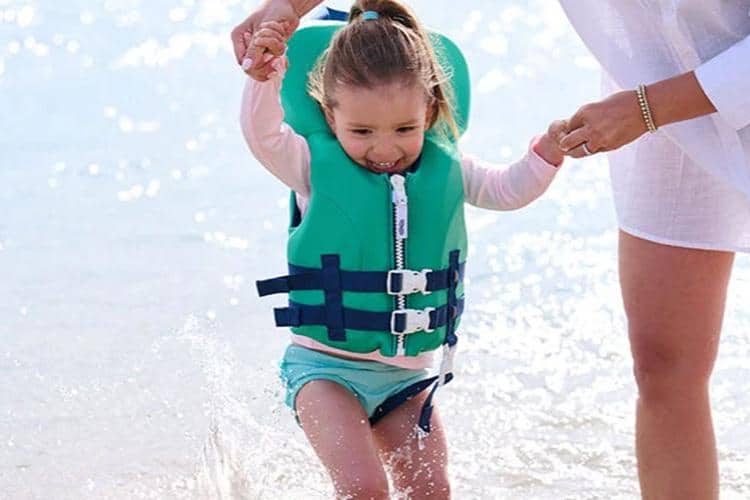
Photo: boaterkids.com
Supervision is the best protection when your toddler is near water. Ideally, a lifeguard is on duty, but even then, they should be your second line of defense. Here’s how to be an effective water watcher:
- Stay Close: Always be within arm’s reach of your toddler. Accidents can happen quickly, so staying close guarantees you can act immediately.
- Avoid Distractions: Put away your phone, books, and other distractions. Your full attention should be on your child in or near water.
- Take Turns: If you’re with other adults, take turns being the designated water watcher. This way, everyone gets a break, but someone always keeps a vigilant eye on the kids.
3. Enroll Your Child in Swim Lessons
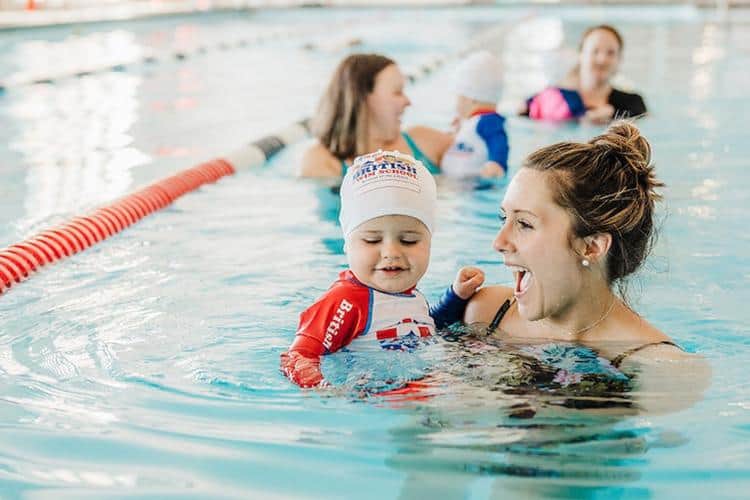
Photo: britishswimschool.com
Teaching your toddler to swim can significantly enhance their safety around water. Here’s why swim lessons are essential:
- Builds Confidence: Swim lessons help toddlers feel more comfortable in the water.
- Teaches Essential Skills: They learn crucial skills like floating, treading water, and swimming to the pool’s edge.
- Encourages Water Safety: Swim instructors also teach toddlers about water safety tips, such as not running near the pool and always swimming with an adult.
Many local community centers, YMCAs, and swim schools offer classes specifically designed for toddlers. You can find swim schools here. Just scroll down and enter your zip code!
4. Create a Safe Water Environment While Traveling
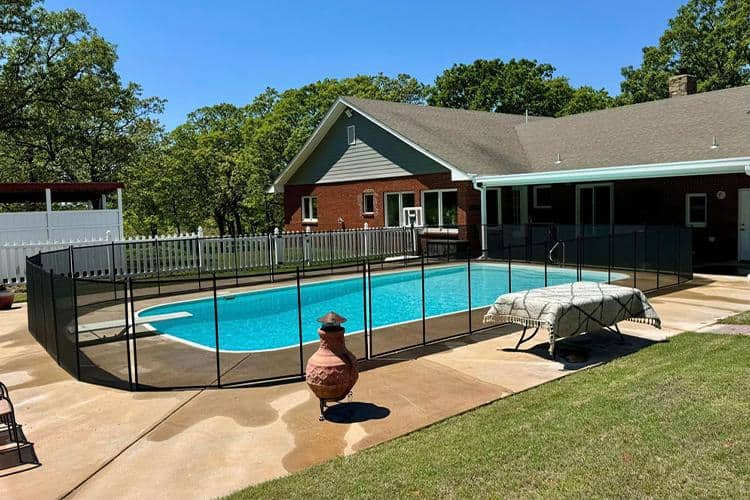
Photo: poolfence.com
When traveling, ensuring a safe water environment for your toddler is essential, whether staying at a hotel, a rental, or visiting friends or family. Here’s what you need to know:
- Inspect and Secure the Area: Upon arrival, get to know the water features in the area, such as pools, hot tubs, ponds, or fountains. Request a room away from direct pool access and inquire about additional safety measures, like pool alarms or lifeguards, if you stay at a hotel or resort.
- Bring Portable Safety Gear: Travel with portable safety items such as door alarms, which can alert you if your toddler tries to exit, and a lifejacket for your child to wear anytime near the water. These tools can help create a safer environment in unfamiliar places.
- Supervise and Educate: Always supervise your child closely, especially in unfamiliar environments. Discuss and reinforce water safety tips for toddlers , reminding them to ask for permission before approaching any water and to stay close to you.
These steps will help create a safe water environment for your toddler, allowing your family to enjoy your travels with peace of mind.
5. Talk About Water Safety Tips for Toddlers
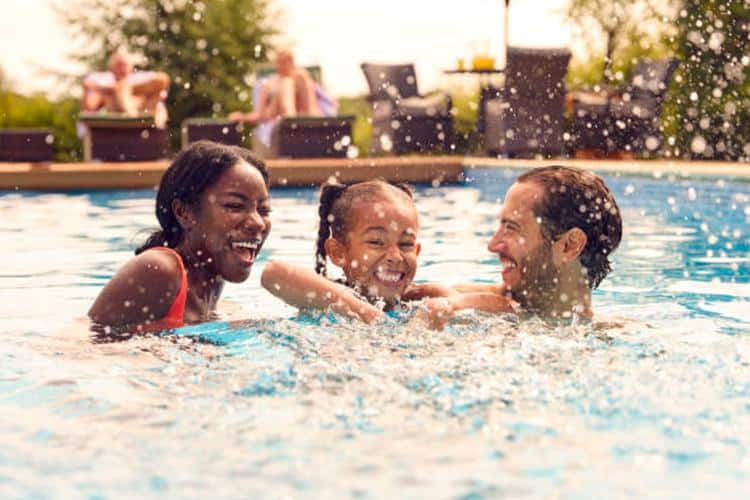
Photo: istockphoto.com
Even at a young age, talking about water safety tips for toddlers with your child can make a big difference. Here are a few basics to start with:
- No Swimming Alone: Teach your children to always swim with an adult.
- Always Ask for Permission: Explain the importance of asking you or a trusted adult if they can go near the water. This ensures a water watcher is present.
- Listen to Rules: Reinforce the importance of following pool rules and instructions from lifeguards or adults.
⭐Bonus Tip: One last thing I’d like to mention is CPR. It’s so important to know how to perform CPR and understand the differences between infant, child, and adult CPR. Having this life-saving skill makes a huge difference in an emergency.
Conclusion
Keeping our kids safe around water requires vigilance, preparation, and education. By using life jackets, being a dedicated water watcher, enrolling your child in swim lessons, creating a safe environment, and talking about basic water safety rules, you can ensure that water safety tips for toddlers remains a fun and safe activity for your little one. You’re teaching them the crucial water safety skills they will use for the rest of their lives!
Remember, your attention and proactive measures are essential!


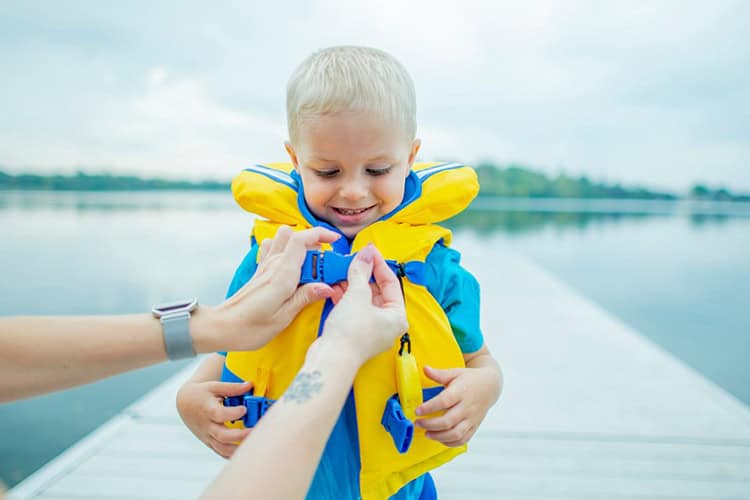
Leave A Comment